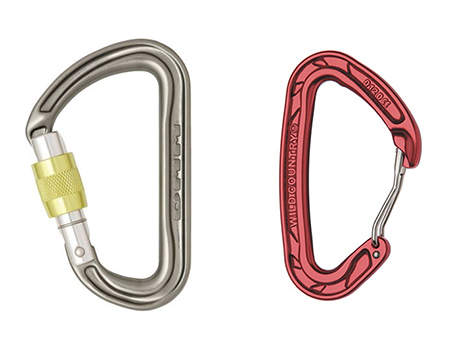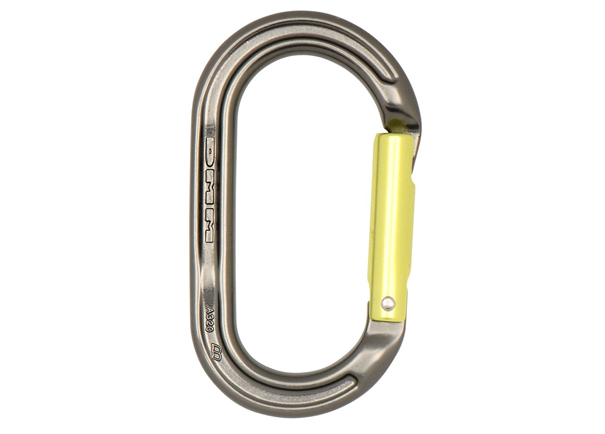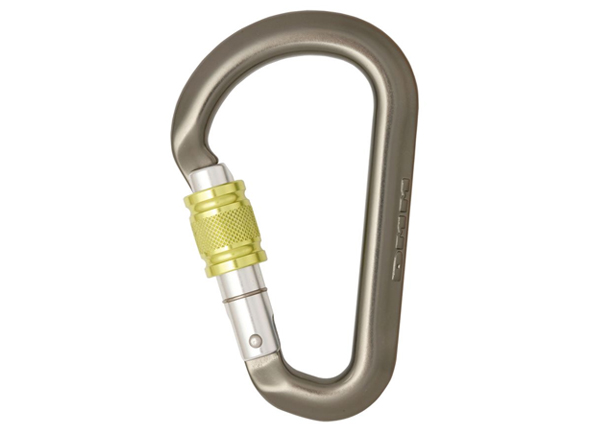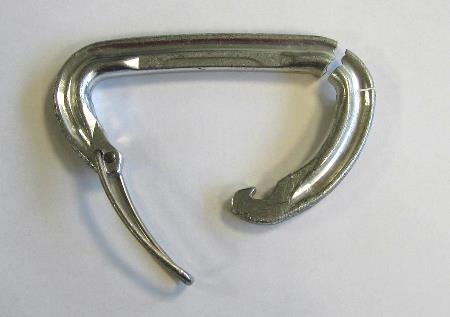Light and incredibly strong, karabiners are an essential piece of kit for climbers and mountaineers. Learn more about the various different types you may need to use, and find out how to avoid problems when using them.
Karabiners and other connectors which are suitable for climbing should meet the European Standard EN12275. The standard splits them into several categories, each with different needs and requirements.
Basic

The majority of karabiners fall into the basic category, which covers all kinds of general purpose karabiner. The main characteristic is an offset D shape, which gives high strength with a good sized gate opening.
Oval

Oval karabiners are inherently weaker than D shaped, but are useful for aid climbing, because their symmetry prevents the shifting under load that can happen with other shapes. They are also ideal for use with pulleys, and popular for carrying bundles of protection on the harness.
HMS

Originally designed for use with the Münter or Italian hitch, these are marked with a letter H on the spine. The wide rope-bearing surface allows smooth running of the rope, and allows room for the hitch to invert. This also makes them ideal for use with most modern manual belay devices.
The extra size of HMS karabiners means they are also often used to connect to anchors at a belay when using multiple knots in the rope.
Specialised types
Other types include Klettersteig karabiners which are marked with a K, which are for use on via ferrata lanyards. Quicklinks or maillon rapides are used extensively in caving and rope access, trading easy opening for strength and security. You might find them used as part of lower offs and abseil points.
Which gate?
Karabiners with non-locking gates are used to make up quickdraws and carry and clip pieces of protection. The original type feature a solid gate closing with a spring, and these are still popular for sport climbing quickdraws because of their durability and ease of handling. A bent gate for the rope clipping end makes for quick clipping under pressure.
Wiregates offer numerous advantages for winter, alpine and trad climbing. They are lighter, don't freeze shut and also are less prone to gate flutter. This phenomenom occurs due to vibrations during a fall, which can lead to the gate being slightly open on impact.
In some instances the extra security of a locking gate may be needed, for example the main attachment to a belay, attaching a belay device and so on. The most common type is the screwgate, which requires manual locking and checking. If you run out of screwgates, you can sometimes use two normal krabs with the gates opposed instead.
Triple action autolocking gates offer similar security to screwgates, being difficult to accidentally open, with no need to remember to screw them shut. There is a weight and cost penalty though, so they tend to be reserved for specialist use.
Twistlocks and other double action gates can be opened fairly readily by moving ropes or pressure against the rock and hence should never be used to replace a screwgate. They are most usually used on via ferrata and ropes course lanyards.
Usage tips
On the spine of a karabiner you'll find details of the strength in kN in different situations. Notice that both the cross load strength and gate open strength are usually around 1/3 of the gate closed strength. Karabiners are strongest when loaded down the spine, with the gate closed. Even so, unless other factors also come into play, a karabiner shouldn't break in these situations.
Karabiners can and do break if 3 way loaded or bent over an edge. Getting the nose hooked up on pegs, bolt hangers or other protection can also cause failure under low loads. Figure of 8 descenders can prise the gate off a karabiner. Learning to carefully choose, use and position karabiners is a vital skill which avoids causing these problems.
WATCH: How to check karabiners and quickdraws for damage on BMC TV

« Back
This article has been read
4883
times
TAGS
Click on the tags to explore more